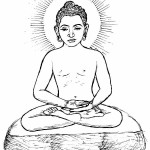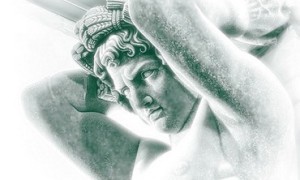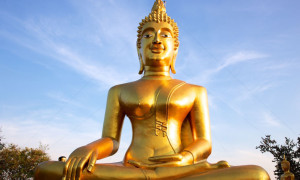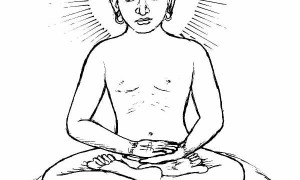
“Experiencing the whole body
(of breath), ‘I’ shall breathe out,” thus he trains himself;
“Experiencing the whole body, ‘I’ shall breathe in,” thus he trains himself.
Buddha, Anapanasati Sutta
Explanation of Anapanasati Stage Three by Buddhadasa Bhikkhu
“Experiencing” means knowing everything completely, clearly, and in detail. It further implies knowing the “body,” that is, the breathing itself, as to its characteristics, its state of being, its causes and results, and so on. Since the word “body” refers here to the breathing, it follows that knowing fully means knowing the breathing as short or long, knowing the movement of the breathing, knowing the source of the breathing, namely the life-force, and knowing the result of breathing, namely the function of respiration, the necessary condition for the body and the whole physical aspect of life. To sum up, “experiencing the whole body” simply means knowing immediately everything related to the breathing. This knowledge culminates in knowledge of the impermanence, unsatisfactoriness, and non-selfhood of all these states and functions.
As to how to “experience the whole body,” an easy way has been suggested. It consists in first analysing the breathing into three phases: beginning, middle, and end. The meditator must feel where the breath originates, how it moves, where it ends, on both in- and out-breath. In the case of breathing in, the breath can be said to originate at the nostrils or some point in that region where the meditator feels the incoming air strike. Normally the incoming air is felt to strike at the tip of the nose, though a person: with prominent lips will feel it on the upper lip, which is then to be taken as the point of origin. The “middle” of the breath is the interval between the point of origin and the end of the breath. So we must consider next the point where the breathing ends. We need not be too seriously concerned as to just where the in-breath ends and turns about. It suffices to take as the end-point a feeling that appears more clearly than others and is more convenient to concentrate on than others. When breathing in to the maximum, the meditator should feel the end of the throbbing movement and pressure of the breathing. It is generally held that the in-breath ends at the navel.
It should be borne in mind that we are here concerned with the practice of meditation and not with anatomy or physiology. The exact point at which the breath ends is unimportant; what is important is to establish mindfulness on the breathing and to experience it. So the navel may as well be taken as the end-point of the in-breath. It suffices for our purposes. We may say, then, that the in-breath has as its point of origin the tip of the nose, as its end-point the navel, and as its middle the whole interval between these two. For the out-breath it is just the other way about — the point of origin is the navel
and the end-point the tip of the nose.
Experiencing the whole body (breathing) is possible when the meditator is aware of the beginning, middle, and end of the entire in- and out-breathing, not letting any part of the process pass unobserved. In practice, however, the mind is very fickle, very easily distracted. Even during a short period of breathing in and out, if mindfulness is not thoroughly established, the mind is bound to leave the breathing object and wander on to other things. For instance, the mind may be well fixed on the breathing at the beginning of the in-breath, only to go astray in the middle of the breath and dwell on something quite
different for a shorter or longer period.
For this reason the meditator is cautioned to concentrate particularly carefully during the middle phase of the breathing. He is advised to apply different methods to keep the mind properly directed. One rough method advised for beginners is to count slowly, from one to five or from one to ten, for the duration of each in- or out-breath. If the meditator applies himself constantly to counting throughout each in- and out-breath, his mind will have no chance to wander. This technique also helps the meditator to control the length of the breathing. He can make his breathing longer or shorter by lengthening or shortening the count.
Here is another method, which is quite subtle and delicate. It is recommended that the meditator should imagine his mind as actually tied to the breathing. He shoulder visualize the air as dragging the mind in and out all the time as he breathes. In order to do this he must breathe strongly enough to be able to feel the movement of the air. He should feel as if his breathing passages were highly sensitive. He should distinctly feel the air as something solid which scrapes as it moves in and out. By this means the meditator will be able to feel the entire breathing cycle and concentrate on it. He will then easily discern where it begins, how it moves, where it ends, and where and for how long it rests before reversing direction. He visualizes the breath as a kind of gem which is being swept along a track, and determines not to let it out of his sight for an instant.
The meditator establishes or fixes his mindfulness on the breathing and sees mentally the entire process without interruption. In this way he is able to experience uninterruptedly the whole body of breath : beginning, middle, and end. When this method is applied the breath body is seen clearly, mindfulness is seen clearly, and knowledge is seen clearly as well. Mindfulness is seen as mindfulness, knowledge as knowledge, and the breath body as the breath body. They are not seen as objects of attachment, as “being,” “person,” “ego,” “self,” “soul,” “me,” “mine.” When this stage has been reached the meditator can be said to know the breath body to its entirety. He is not subject to any defiling state of mind such as covetousness and grief, and has constant equanimity.



